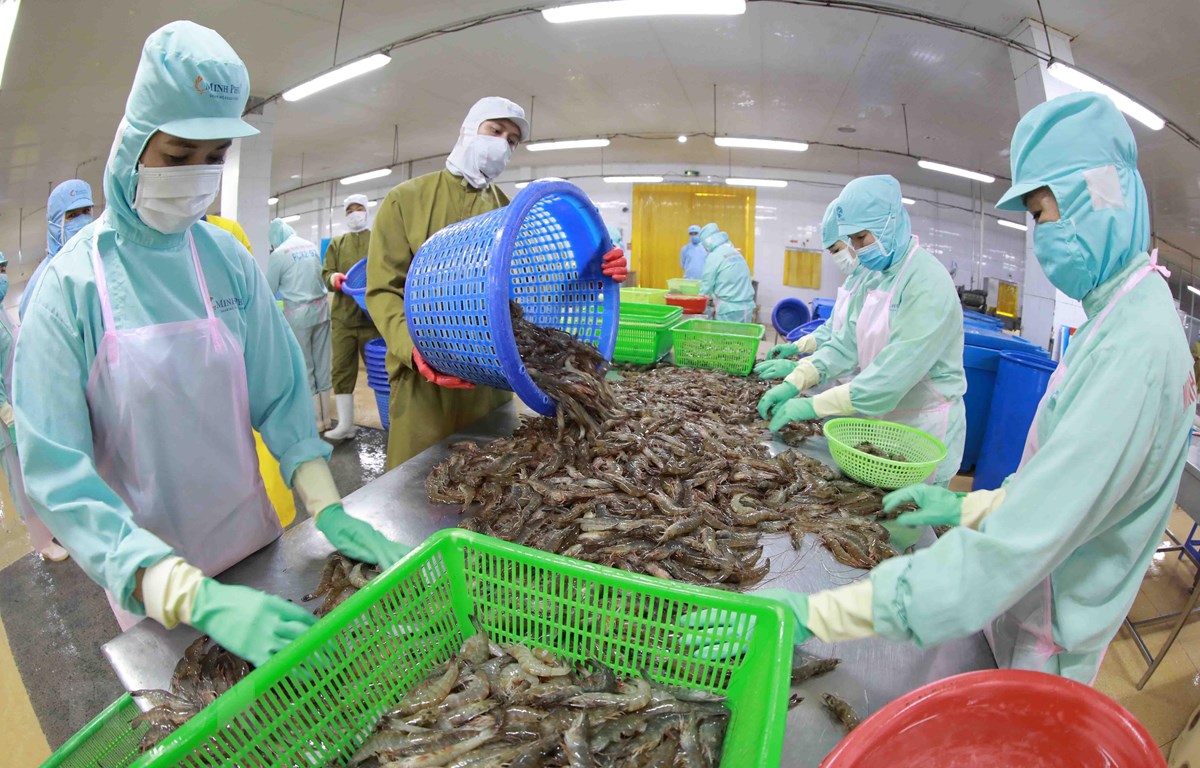The News
Assess the impact of the CPTPP commitments on the seafood
At the beginning of 2019 when the CPTPP Agreement took effect, 10 CPTPP member countries accounted for about 25% of Vietnam's seafood export turnover, therefore, the CPTPP Agreement is highly expected to promote export growth of our country's seafood industry.
At the beginning of 2019 when the CPTPP Agreement took effect, 10 CPTPP member countries accounted for about 25% of Vietnam's seafood export turnover, therefore, the CPTPP Agreement is highly expected to promote export growth of our country's seafood industry.
At the beginning of 2019 when the CPTPP Agreement took effect, 10 CPTPP member countries accounted for about 25% of Vietnam's seafood export turnover, therefore, the CPTPP Agreement is highly expected to promote export growth of our country's seafood industry.

In general, commitments on preferential import tariff that CPTPP member countries give to seafood products exported from Vietnam are mostly eliminated. In some large markets such as Japan, the export tariff opportunity is clear as currently, most of processed seafood products are subject MFN tariff of 4.8 - 10.5%, which will be reduced to 0% immediately when the Agreement took effect, except for herring and mackerel products with a 6-year tariff elimination roadmap. Products with HS code 03 include bluefin tuna, bigeye tuna, albacore tuna, salmon, herring, mackerel, anchovies, swordfish, cod, pollock, tariffs will be eliminated after 6 to 11 years…, except for tuna and some marine fish with a 6-11 year tariff elimination roadmap. Tariffs of shrimp, pangasius and other products are almost reduced to 0% in CPTPP markets. These countries account for 31% of Vietnam's shrimp exports, 15% of pangasius exports and 31% of seafood exports. In addition to the basic benefits of import tariff, when participating in new generation FTAs such as CPTPP, Vietnamese seafood industry will have the opportunity to expand export markets, increase competitiveness compared to competitors without FTAs with our partners; attract foreign investment, improve production technology and product quality; increasing opportunities to participate in regional supply chains thanks to the investment movement of multinational corporations; ensure a more stable and transparent business and institutional environment (as a result of improved regulations and policies in accordance with commitments of the FTA).
In fact, after the CPTPP came into effect, Vietnam's seafood exports to this bloc sector grew by nearly 3% in 2019, of which exports to Japan and Australia both increased by 6%, while exports to Japan and Australia increased by 6%, exports to Brunei up by 10%, exports to Malaysia and Peru slightly increased 1%.
In 2020 and 2021, seafood exports to the CPTPP bloc decreased by 2%, mainly due to the impact of Covid affecting trade and reducing import demand. Accordingly, exports to Japan decreased by 3% and 7% respectively in 2 years, which was the main reason for the decrease in total exports to this bloc. However, exports to Canada, Australia, Malaysia, Mexico and New Zealand were quite positive in the past 2 years. In which, seafood exports to Australia maintained positive growth for 3 consecutive years: increasing by 6%, 10% and 22% respectively. Exports to Canada in 2020 increased sharply by 14%, but in 2021, it decreased slightly by 2% due to the Covid epidemic, which caused increased freight rates, lack of shipping containers to North America. Exports to New Zealand increased sharply by 20% and 18% in 2020-2021. The importance of the CPTPP bloc is more evident when its share in Vietnam's total seafood export turnover increased from 25% in 2018 to nearly 28% in 2021.



